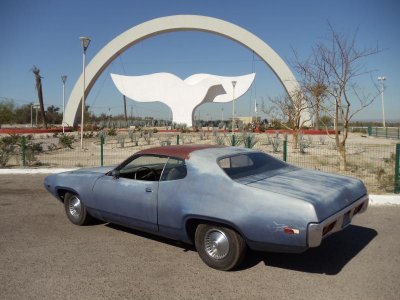Dibbons
Well-Known Member
- Local time
- 4:12 PM
- Joined
- Nov 29, 2014
- Messages
- 4,990
- Reaction score
- 6,001
- Location
- La Paz, B.C.S., Mexico
It's been a few decades since I performed any body work. I have some reddish primer laid down covered by a light mist of white from a spray can as a guide coat. Before I begin the block sanding (I think it's called block sanding) I wonder with the fuselage styling of this 1972 Satellite Sebring Plus if using one of those common rubber sanding blocks is going to be too flat to use on the very rounded shaped fenders, doors, quarter panels, and trunk lid? Should I try something more flexible to back up the sand paper? I want to get this right the first time, materials cost a small fortune! Thank you. (the picture below does not show the primer that's applied now)

















